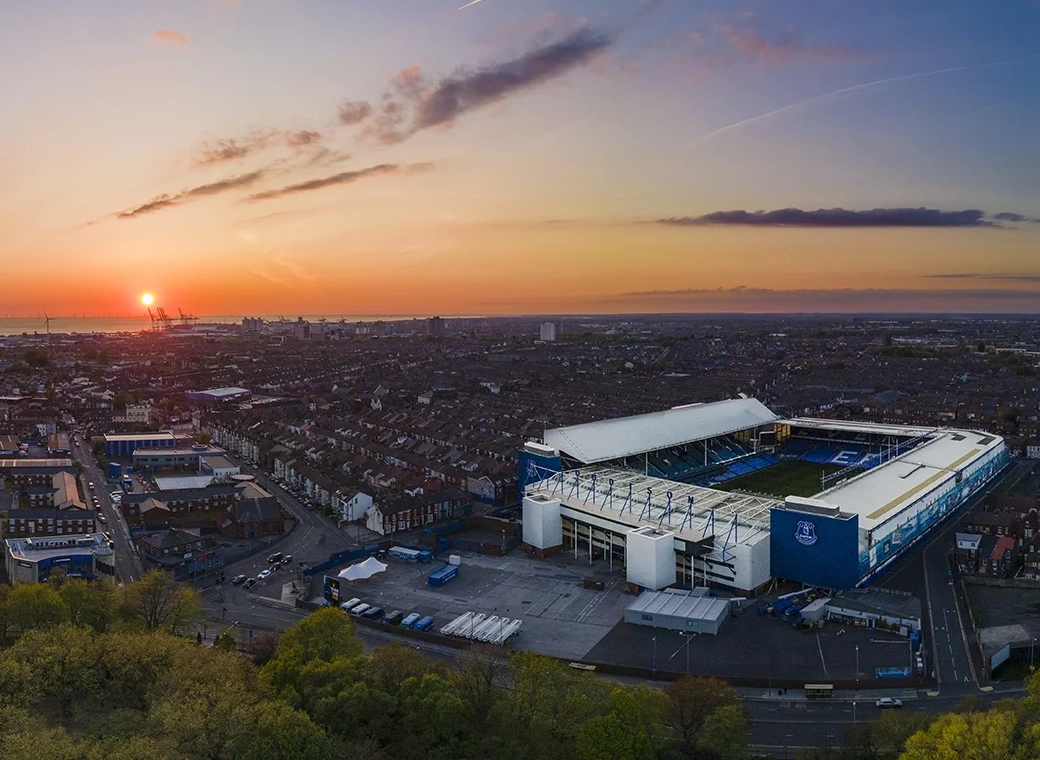Latest article from the Times…impeccable timing from the PL client journalists.
FOOTBALL | MARTYN ZIEGLER
How Everton and Nottingham Forest broke profit and sustainability rules
new
From unheeded warning signs to overspending on transfers, a combination of factors brought about the clubs’ breaching of Premier League regulations
Martyn Ziegler, Chief Sports Reporter Thursday February 01 2024, 3.00pm,
Warnings that Everton might breach the Premier League’s financial rules for both the 2021-22 and 2022-23 seasons were given to the club as far back as August 2021.
That was the point when the Premier League made an agreement with Everton not to take any action
against the club over a breach of Profitability and Sustainability Rules (PSR) if it abided by certain conditions. Clubs are limited to losing £105 million over a rolling three-year period, though some costs can be taken oN.
However, Everton’s financial position in August 2021 was such that the club had to provide “future financial information” for the two seasons to come, including a calculation of estimated “aggregated adjusted earnings before tax”. The agreement stated that Everton were “forecast to be non-compliant by having a PSR calculation with losses in excess of £105 million for season 2020-21; and potentially season 2021-22 and 2022-23.”
!!!!!! !!!!!!! !!!!!!! !!!! !!!!!!! !!!! !!!!!!! !!!! !!!!!!! !!!! !!!!!!! !!!!!
!!!!!! ! !!
! ! !!
! ! !!
! !!
! ! ! !!
Paul Quinn, who writes an Everton blog called theesk.com, says: “Premier League rules state that any club making a £15 million loss or more has to provide future financial information estimating their earnings for the two years after that.”
Everton, who are owned by Farhad Moshiri, insist they did not breach the conditions of the 2021 agreement, nevertheless the club were still hit with two charges, for the three-year period ending 2021-22 and 2022-23 respectively. They are appealing against a ten-point deduction for the first charge before the second hearing takes place.
ADVERTISEMENT
Nottingham Forest had been spending heavily and racking up big losses in the EFL since the takeover of the club by the Greek shipping magnate Evangelos Maranakis in 2017, but had managed to avoid any PSR charges.
High wage bills as a percentage of their turnover have contributed to the situation that Forest and Everton now Wnd themselves in
NIGEL FRENCH/PA
However, that changed with a big transfer spree after promotion to the Premier League, and they have accepted they have breached the PSR limit. Their limit was lower however at £61 million — £13 million for the 2020-21 and 2011-22 seasons when they were in Championship plus £35 million for last season.
Early warning signs
The red flags for any club when it comes to complying with financial rules are, clearly, making heavy losses, but another strong warning sign is spending a high percentage of turnover on wages — 80 per cent or more.
In 2018-19 Everton made a loss of £111.8 million, with turnover £187.7 million and wages £160 million (85 per cent of turnover). The picture the following year was even worse: a £139.8 million loss with similar turnover, but wages were now 88 per cent of turnover.
SPONSORED
In the 2020-21 season, with match-day income of around £15 million wiped out because of the Covid pandemic, Everton’s loss for the year was £120.9 million. Their annual report stated that “when adding back the crystallised financial impact of the pandemic, the underlying financial loss for the year was £106.1 million”.
The warning signs for Forest were also there some time ago: in 2019-20, the club were in the Championship and their annual turnover was £25.7 million but the wage bill was £38.1 million — so for every £1 coming into the club, £1.48 was spent on salaries, and the loss for the year was £15.9 million.
Nevertheless, that year’s annual report stated: “The board sees remaining with the discipline of the EFL’s Profit and Sustainability Rules to be a high priority and has shown that it has the discipline to take tough decisions regarding player sales to ensure compliance. The club will control losses in future years to ensure continuing compliance with the rules.”
The financial picture for Forest was much the same for the next year except that empty stadiums meant turnover dropped to £18.8 million, less than half of the wage bill. In 2021-22, there was an extra £8.7 million in match-day income but wages rocketed to £58.5 million, up from £37.1 million, partly due to the payment of around £21 million bonuses from promotion to the Premier League. Forest’s losses were £45.6 million: a cause for concern, but with the guarantee of a minimum £190 million in Premier League TV money (and parachute payments should they go back down) the situation was recoverable.
⌃
Everton claimed £90 million in losses caused by the pandemic, from lost match-day income, commercial income and paying a rebate to TV broadcasters. Everton also claimed £42 million of “player impairment” to reflect lower values in a deflated transfer market. According to the football finance blog Swiss Ramble, this was “twice as much as the next highest club in the Premier League”.
As far as Forest were concerned, for the two seasons in the Championship the EFL laid down the maximum amount a club could write oN for Covid losses of up to £5 million for 2020-21 and 2021-22. Forest had claimed more, insisting their Covid losses were £16.7 million across two seasons, using the argument that their player sales had been hit by the downturn in the transfer market.
Other allowable deductions
Everton were permitted to deduct £27.1million from their PSR calculation as stadium costs for work on the new stadium at Bramley-Moore Dock
MARK SEDDON/GETTY IMAGES
Under the August 2021 agreement with the Premier League, Everton were permitted to deduct £27.1 million from their PSR calculation as stadium costs for work on the new stadium at Bramley-Moore Dock. Swiss Ramble has estimated a further £56 million could be deducted for the three years up until the 2021-22 season for the academy (£25 million), women’s football (£6 million), community projects (£5 million) and infrastructure depreciation (£20 million).
Forest could deduct the £21 million promotion bonuses for their PSR calculation as well as an estimated £17 million for academy, women’s football, community projects and depreciation.
Transfer spending
In 2017 and 2018 Everton had used income from player sales from the likes of Romelu Lukaku to reduce their losses but that started to decline until the sale of Richarlison for £60 million in 2022 and Anthony Gordon for £45 million in January 2023.
At the same time, amortisation — the annual cost of a player’s transfer fee spread over the length of his contract and reported in the financial accounts — more than trebled from 2016 (£22 million) to 2019 (£95 million). It hit a high of £99 million the following year before declining but some estimates are that it rose again to above £80 million for 2022-23 after signing Amadou Onana, Dwight McNeil,
Neal Maupay and James Garner all for substantial fees.
Forest spent £152 million in the 2022 summer transfer window after being promoted to the Premier League, on 21 players, and added another seven in the January 2023 window. It meant their total outlay was even higher than the likes of Newcastle United or Tottenham Hotspur. Only £4 million was banked from player sales.
Morgan Gibbs-White was one of the big-money signings made by Forest in the summer 2022 transfer window
Agents’ fees
Intermediary fees are paid to agents by clubs for transfers and other deals such as new contracts. Everton were on a warning about their spending by the Premier League via the agreement in August 2021, but that did not prevent them splashing out £13.5 million on agents’ fees in the 2022-23 season — higher than Newcastle, West Ham United and Brighton & Hove Albion.
Despite their high outlay on transfers, Forest managed to keep their spending on agents’ fees down to £4.4 million, the lowest in the Premier League.
Commercial income
Everton’s sponsorship, advertising and merchandising revenue is about £35 million, but in 2019-20 the club enjoyed a £30 million boost for selling the option for the naming rights for the new stadium to the Russian-Uzbek billionaire Alisher Usmanov’s USM Services. Everton claim they were close to sealing a stadium naming-rights deal with USM for £10 million a year for 20 years, but pulled out after Russia’s invasion of Ukraine which later led to Usmanov being sanctioned by the British government.
Exceptional costs
Everton’s 2021-22 accounts revealed an “exceptional cost of £10.5 million which was incurred for amounts payable in relation to a change in coaching staN” — that was the cost of sacking Rafael Benítez and his coaching team. The cost of sacking Frank Lampard in January 2023 has not been revealed yet but is likely to be less than half that amount.
Loans and debts
Everton took out loans of £150 million from Rights & Media Funding Ltd and £26.25 million from Metro Bank plc. The club argued that they used some of that loan on the new stadium project and so £17.4 million of interest should be excluded from their PSR calculation. The Premier League argued that the evidence showed the stadium was funded via loans from Moshiri, and its position was backed by the independent commission.
Everton’s most recent accounts show Moshiri has an outstanding interest-free loan to the club of £381 million. His total investment, including to the new stadium, has been around £750 million and some loans have been converted into equity.
Nottingham Forest’s accounts show a £41 million loan from Maranakis was converted into shares in June 2022.









